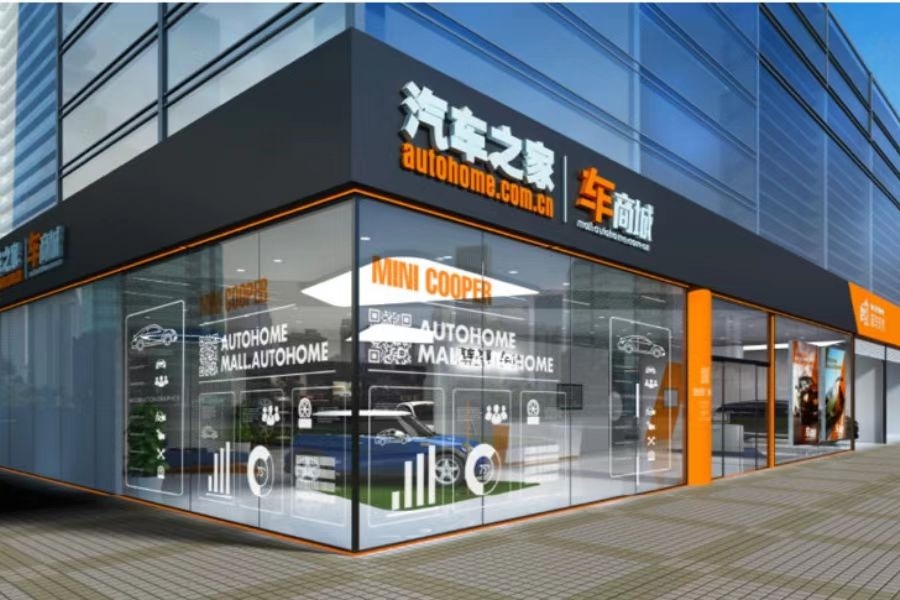Autohome Weathers Covid Storm, Revs Up for Speedier Second Half

The Internet auto-sales platform’s revenue grew 17.7% sequentially in the second quarter, showing resilience in the face of China’s pandemic disruptions
Key Takeaways:
- Autohome’s revenue rose strongly on a sequential basis in the second quarter despite a year-on-year decline, sparking a rally for its stock
- Company should benefit in the second half from new vehicle launches and government measures to stimulate vehicle consumption
By Lau Ming
What is it about an internet auto platform whose profits declined in the second quarter that has still managed to win over investors?
For leading internet auto trader Autohome Inc. (ATHM.US; 2518.HK), the bottom line clearly wasn’t the market’s focus when the company announced its second-quarter financials last week. The company’s non-GAAP adjusted net profit, which strips out non-cash expenses like stock incentives, fell by 40.6% year-on-year to 470 million yuan ($69.6 million) during the quarter, marking a second consecutive decline of more than 40%. Despite that, however, the company’s business performance looked relatively solid in the face of lockdowns in major Chinese cities including Shanghai.
Perhaps what caught the market’s attention was a 17.7% quarter-on-quarter rise in second-quarter revenue to 1.73 billion yuan, even though the figure was down 10.6% on a year-on-year basis. The figure was slightly ahead of the average analyst’s expectation for 1.71 billion yuan as cited by Bloomberg. Then there was the positive outlook from Chairman and CEO Long Quan, who said he expects revenue to continue growing in the third quarter as government policies designed to stimulate auto sales take effect.
Investors seemed to like the overall story, with Autohome’s New York-listed shares posting a 11.8% rally the day of the announcement. The company’s Hong Kong-listed shares followed with a similar 11.5% rally the next day to HK$77.90, closing in on the company’s high this year of HK$78.05. Thus, it appears that after months of difficulties, Autohome has finally won back investors.
Vehicle production and sales in China followed a “U” curve in the first half of the year, with the months of March and April hitting lows as cities across China implemented harsh lockdowns to control outbreaks of the Covid Omicron variant. Data from the China Association of Automobile Manufacturers showed auto production and sales maintained steady growth in the first two months of the year, but suffered a precipitous fall starting in the second half of March as Covid control measures disrupted supply chains, logistics and production. After dropping by nearly 1 million vehicles in monthly sales between March and May, the market began to come back as the first half drew to a close.
June sales of 2.5 million vehicles represented 23.8% year-on-year growth, and month-on-month growth of 34.4%. But the June surge failed to fully offset abysmal sales in April and May, leading to an overall 13.3% year-on-year decline in second quarter sales. Thus, the quarter-to-quarter revenue growth for Autohome far outstripped the broader market as a whole.
Jump in media-service revenue
Autohome has been exploring new business models to counter the pandemic’s impact. For example, it introduced virtual reality (VR) technology into its smart showrooms that allows consumers to check out cars without being physically present, which has been effective in helping its dealerships attract customers. The company also harnessed its big-data and other technologies to boost its distributors’ non-contact sales and marketing abilities, further boosting its brand. Thanks to these efforts, the company’s average dealership reported year-on-year revenue growth of 20% in the first half of this year.
In addition, the company’s media-service revenues nearly doubled in the second quarter to 530 million yuan, showing auto companies were stepping up their marketing in anticipation of better times ahead as the latest outbreaks come under control. Its revenue from providing leads to potential used-car buyers to match them with sellers also grew by a more modest 6.3% quarter-on-quarter.
Intense competition among internet platforms means that companies need to keep up their marketing and R&D investment to retain and attract customers, and Autohome is no exception. The company’s operating expenses jumped by 14.3% during the second quarter, including a 31.4% surge in sales and marketing expenses and 8.2% rise in R&D costs.
Slowing revenue growth amid the pandemic has put pressure on the company’s operating profit margin. That margin sank to 10% in last year’s fourth quarter, but has shown recent signs of stabilization by rebounding to 16% in the first quarter and 17% in the second.
Seventeen Chinese government departments jointly released a plan to jumpstart distribution and consumption in the auto sector last month. Analysts believe the passenger vehicle market is likely to regain lost ground even faster in the latter half of this year thanks to those measures. That prompted the China Association of Automobile Manufacturers to maintain its previous estimate that passenger vehicle sales in China would reach 23 million this year, up 7% from 2021. If the predictions are correct, passenger car sales in the latter half of the year would need to rise by nearly 30% from the first-half figure, with 2.7 million more cars sold than in the first half of the year.
Multiple models set to debut
The predicted big rise in sales could also be fueled by the planned debut of many new models in the remainder of the year, especially from electric car makers. BYD (1211.HK) alone will contribute four. Smaller EV startups will launch new models as well, including the ETF5 by NIO (NIO.US; 9866.HK), the G9 by XPeng (XPEV.US; 9868.HK) as well as the L9 and X02 by Li Auto (LI.US; 2015.HK). Such rapid succession of launches hints at big demand for marketing services, which will provide a lift to Autohome’s business.
The bottom line is that the auto industry is showing signs of hitting its former stride, fueled by a potent combination of government policies to further boost vehicle consumption and companies themselves stepping up their marketing and promotional efforts. From its position at the nexus of that universe, Autohome also stands to benefit from the trends and get back on track.
In terms of valuations, Autohome’s latest price-to-earnings (P/E) ratio stands at around 11.9 times, lower than rival auto trading services provider Cango’s (CANG.US) 22.6 times and a lofty 200 times for online vehicle financing and transaction platform Yixin (2858.HK). That may indicate investors are still undecided on the company despite building signs of a sector recovery.
Morgan Stanley is also quite conservative on the company. In its latest research note, it said Autohome can maintain recovery momentum in the third quarter thanks to favorable policies and new vehicle launches, but that the company still needs to find structural drivers for long-term growth. Accordingly, the investment bank maintained its “neutral” rating for the company, with a target price of $34 for its New York shares – 6% lower than the closing price of $36.18 on Tuesday.
To subscribe to Bamboo Works weekly free newsletter, click here





